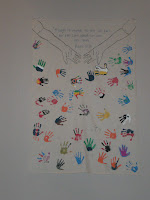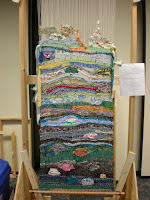 November 1 is All Saints' Day.
November 1 is All Saints' Day.
At APC, the service for All Saints' Day is a small and meaningful worship experience. It is a time to commemorate our loved ones, in particular those who have died in the last year. We hear beautiful music, offer crosses with the names of the deceased, turn to God in prayer, and celebrate the sacrament of communion. We light candles and write the names of our deceased loved ones in a comforting ritual. Each year, the squares of cloth with these names are sewn into works of art that are displayed in future years. Whether you are a mourner, or a comforter, all are are welcome to attend.
For grief to be fully expressed, grief must be shared. There are not many spaces or occasions in our world where people may openly express and communally share their sense of loss at a loved one's death. The church is the place where this happens. While other groups and organizations may offer opportunities for individuals to grieve, the church provides ritualized expression and wide community support for those who have experienced loss.

Ultimately, the church promises the hope found in Christ. On All Saints' Day, we come together to express our losses as a community centered in Christ. We share in our grief and in our faith. We hear one another and heal one another. We remember the lives of those who have gone before, and we profess our faith in the life that is to come. Please join us for this special service.

















































